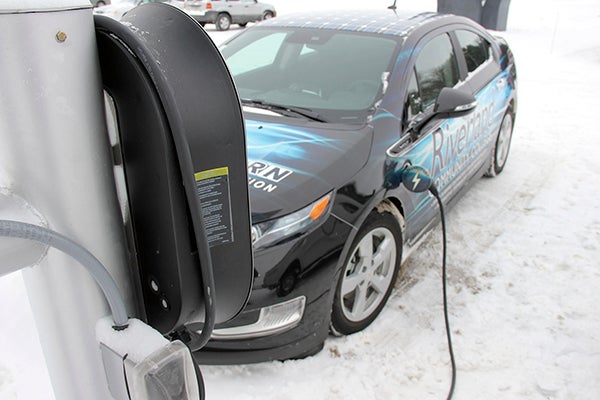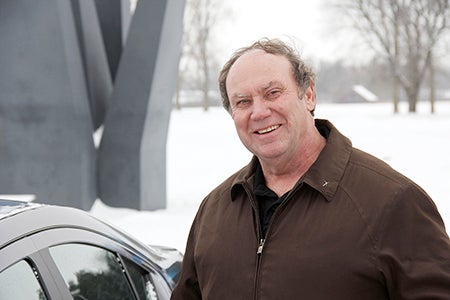A charge for the future; Riverland to build stations for electric cars
Published 10:42 am Wednesday, April 16, 2014

A Chevy Volt owned by Riverland plugs into a charger at the north parking lot on campus in Albert Lea. — Tim Engstrom
Austin is getting electric when it comes to transportation.
Austin Utilities and Riverland Community College officials plan to turn two parking spaces in the lot at Third Avenue and First Street Northwest into a dual charging station for electric cars this fall. Riverland’s solar installer students could build a Level-2 charging station in September or October, provided the city of Austin agrees.
Riverland also plans to put in similar electric vehicle charging stations at each of its campuses. There’s already an electric charging station in Albert Lea, but Riverland officials hope to put in a charging station at each of Austin’s campuses and at its Owatonna location over the next few semesters.

Riverland Community College professor Steve Vietor prepares students for careers in renewable energy.
“The long-range plan is to have a solar electric vehicle grid-tied charging station,” Riverland instructor Steve Vietor said. “It will be a solar array that’s tied to the grid.”
Though Austin Utilities officials aren’t sure how many people in Austin drive electric cars, they said constructing an electric vehicle charging station not only helps the city meet goals in its Minnesota GreenSteps Cities classification but also provides another service and a potential tourism opportunity for people passing through the area on Interstate 90.
“Because we are the electric company, we felt we should kind of take the lead in a project like this, and this technology,” Kelly Lady, marketing and energy services manager said.
The station could cost less than $20,000, according to Lady, and officials have already secured grant money for the project. The Hormel Foundation has donated $10,000 while the Southeast CERT (Clean Energy Resources Team) has donated $2,000.
Lady said Austin Utilities and Riverland officials are following through with the project in part to see the response in the community and in the region as nearby communities develop electric vehicle services. Utilities officials also plan to study the effects a charging station will have on the company’s electric grid, especially during peak hours. That data will be available to the public, according to Lady, so interested people like Riverland students can also study electric vehicle charging.
The dual charging station is classified as Level 2 out of three possible levels, which Vietor said means a car can fully charge in about two hours. During that time, Riverland and utilities officials hope vehicle owners walk through downtown Austin and visit nearby businesses.
Utilities and Riverland officials hope to bring a proposal to the Austin City Council within the next few months so Riverland students can begin building the station this fall.
Riverland invests in electric car
Riverland owns a Chevrolet Volt, a hybrid-electric car. It travels 30 to 40 miles completely with electric power. After that, a gasoline-powered motor kicks in that runs the electric-based generators that propel the car. The gas motor even provides extra charge to the batteries.
Vietor said the electric-based mileage goes down slightly in the winter and summer because of the heater and air conditioner. What’s neat, though, is the Volt’s computer system will find the most cost-effective way to run the heating and cooling, he said.
And though an electric car is more expensive to purchase — the sticker price for a Chevy Volt is $34,185 — the savings come on the road. Vietor said it costs him about $9 to drive his Chevy Suburban 18 miles from the Albert Lea campus to his Austin area home. It costs $2 in electricity with the Volt.
“Even if you don’t believe in global warming, nine times out of 10, you believe in conservation,” Vietor said. “The savings come in the day-to-day use.”
Students at Riverland learning about the wind industry also study solar power. Vietor said it makes them more employable because the companies that run wind power also are in the solar industry.
—Tim Engstrom contributed to this report.





